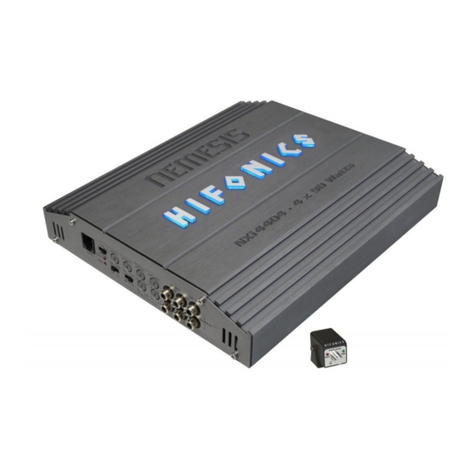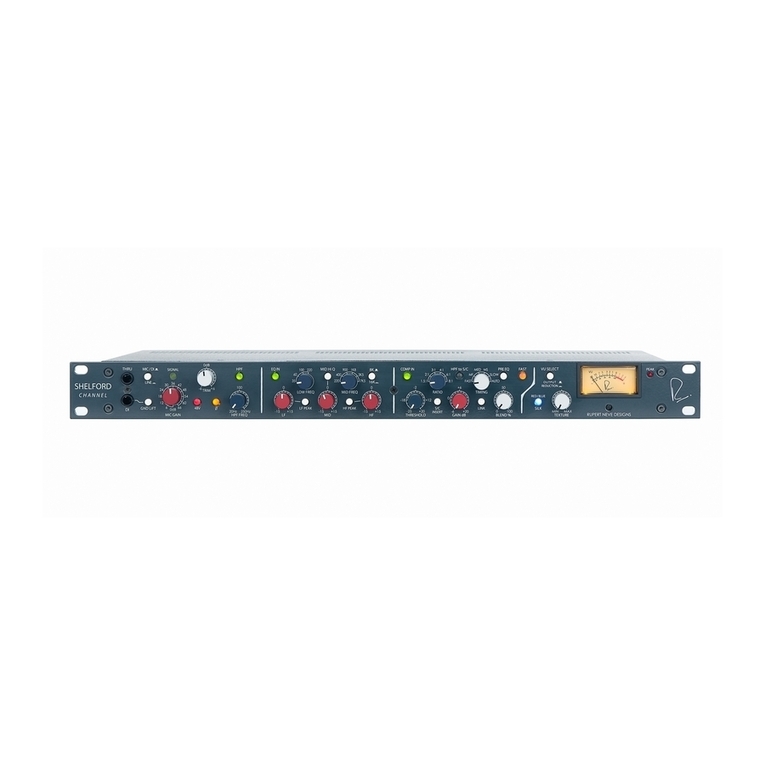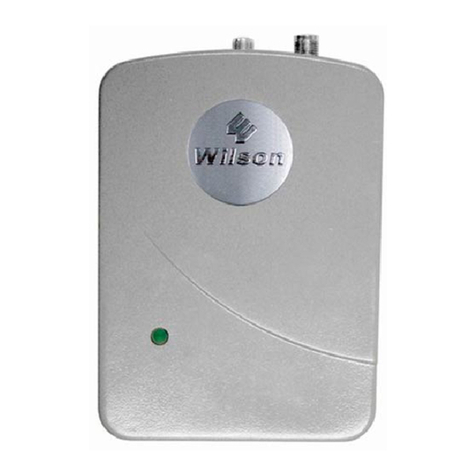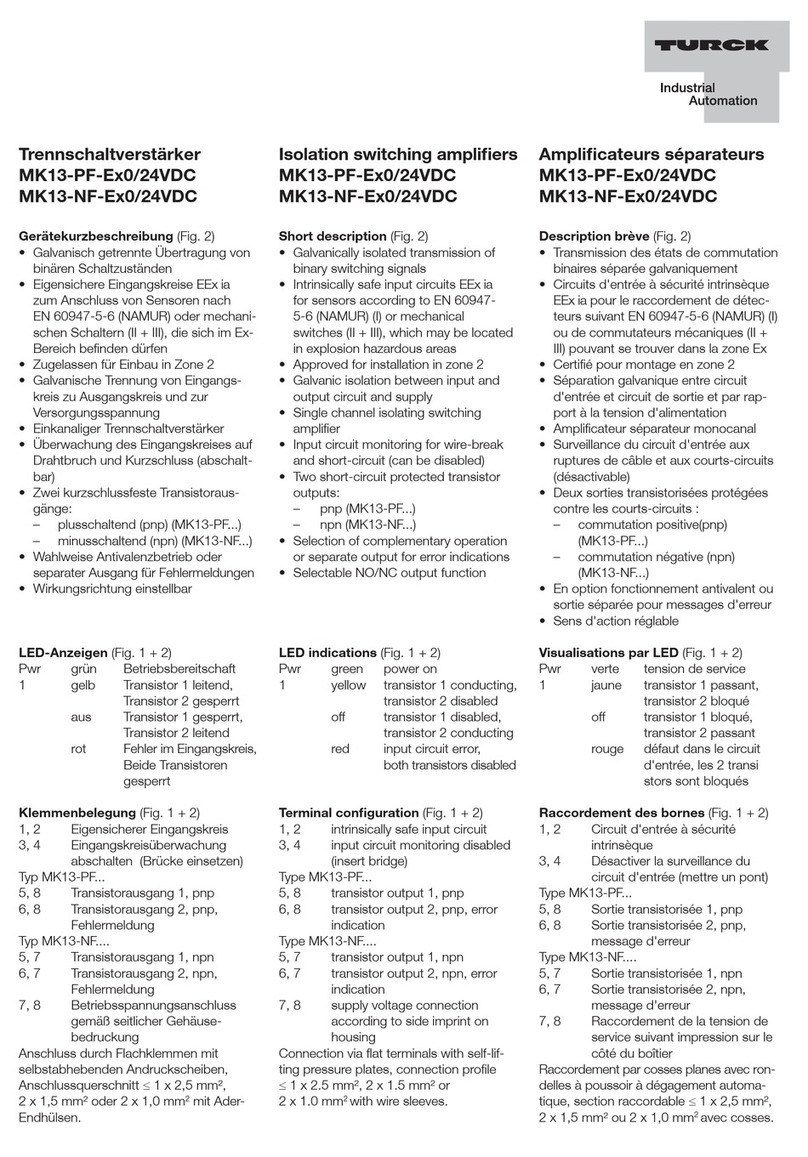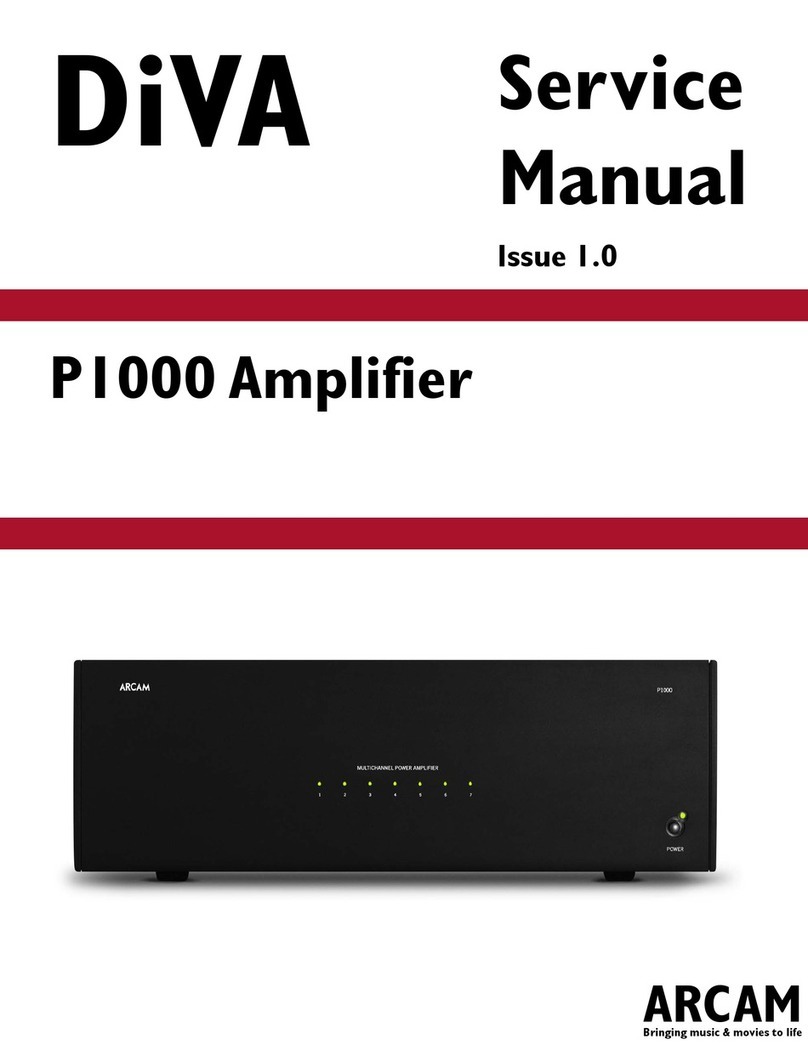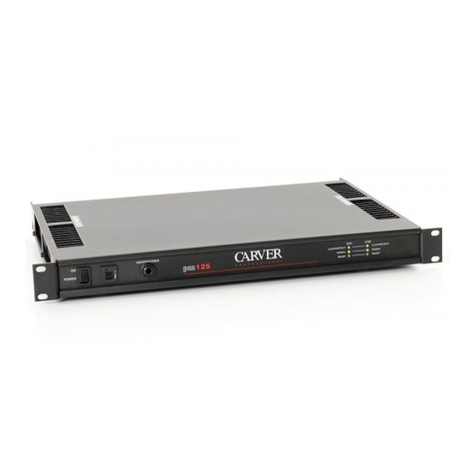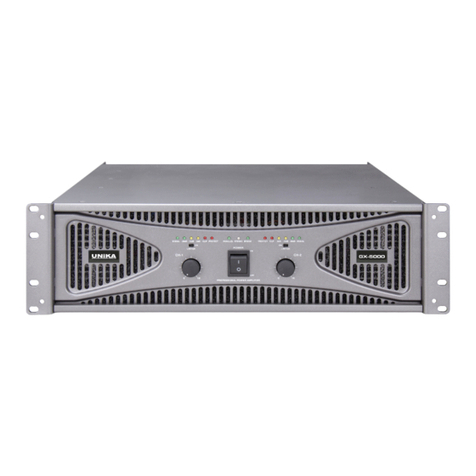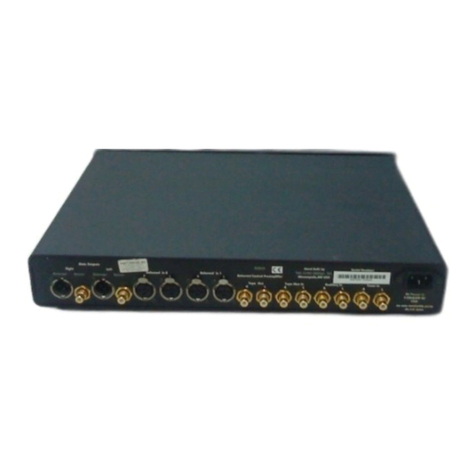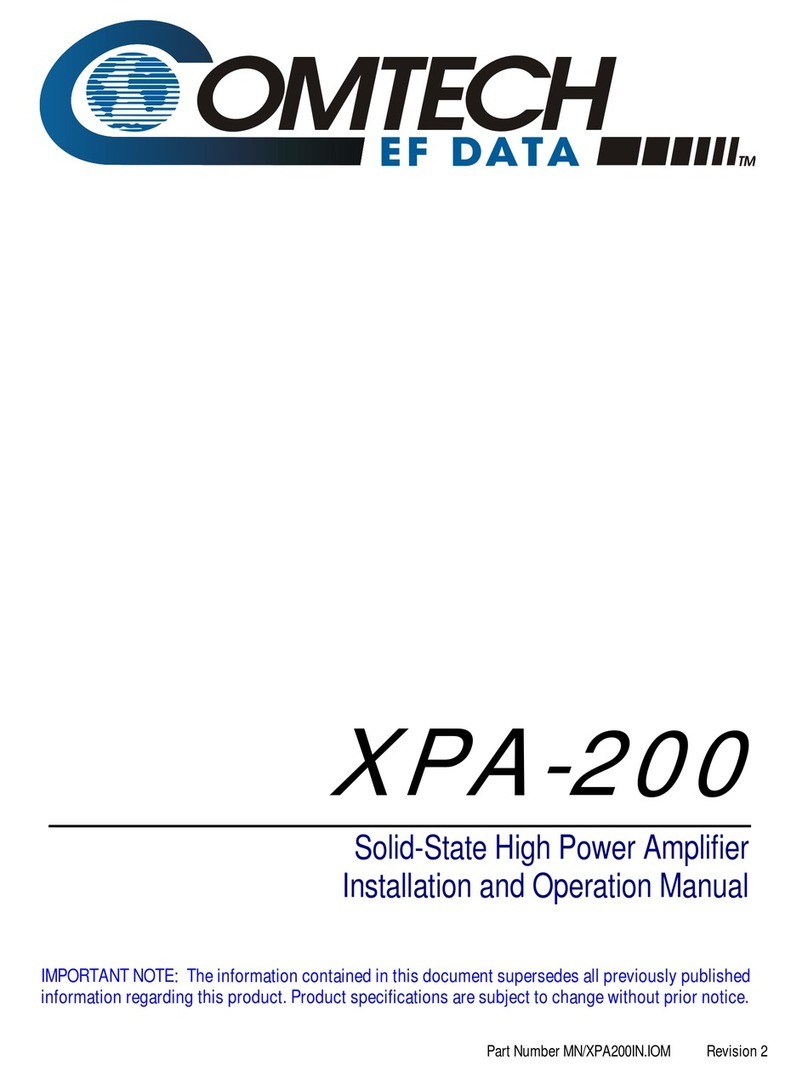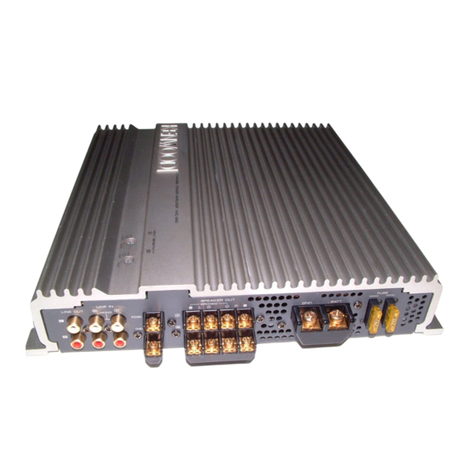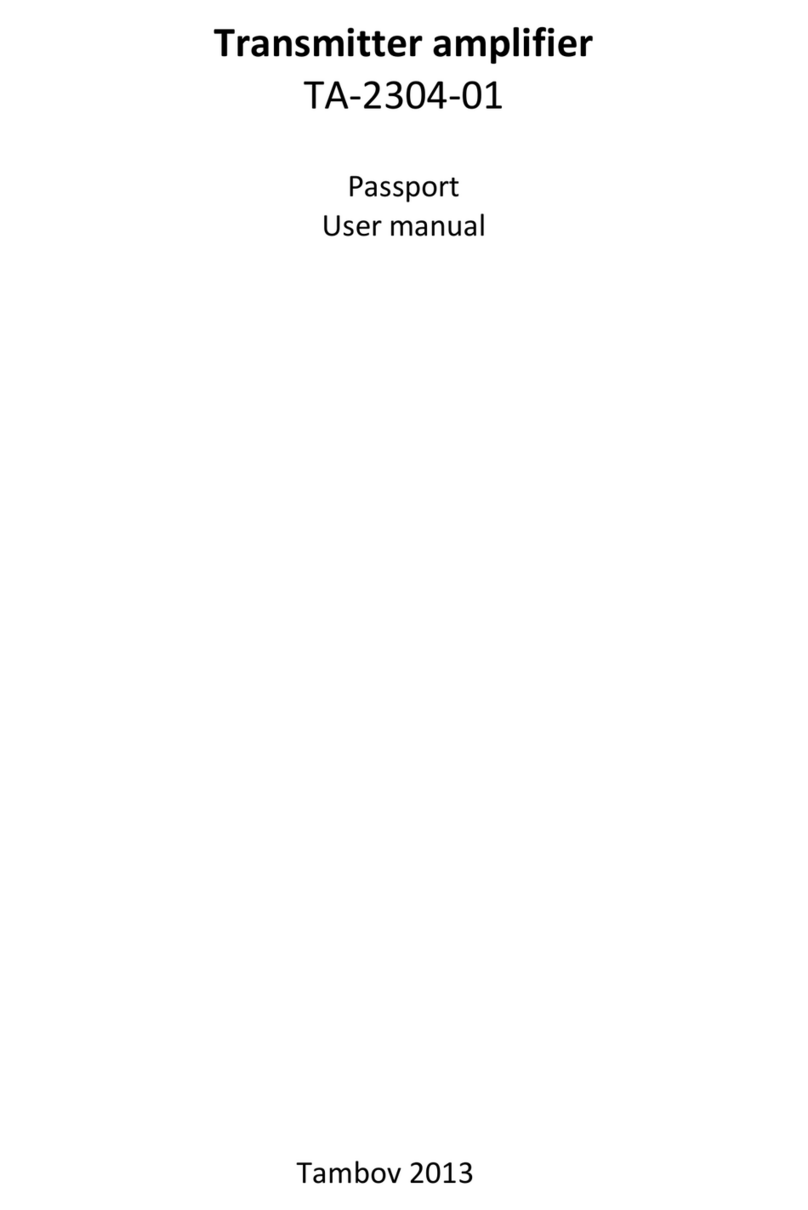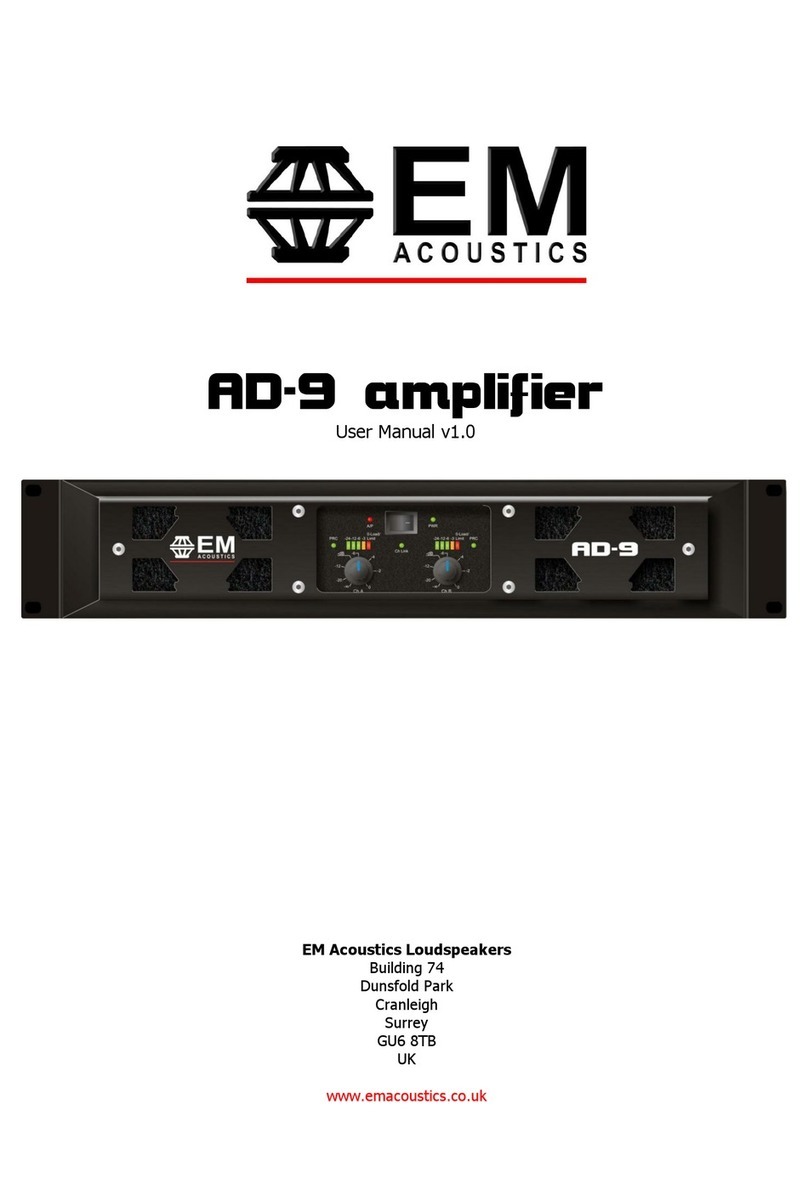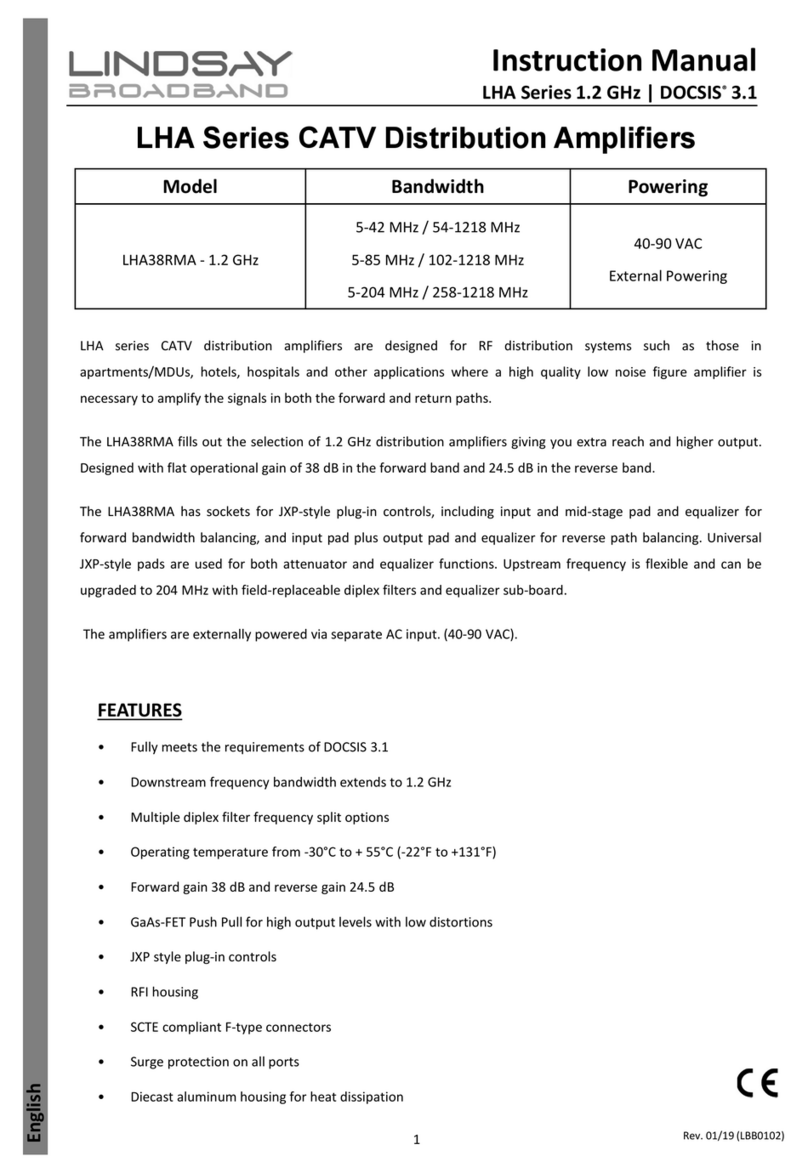Edmunds Gages Accu-Setter II User manual

How to Use This Manual
Acrobat provides various methods for navigating through a PDF document. The
recommended method of navigating this manual is through the use of the Bookmarks.
To browse using Bookmarks:
Show the Bookmarks list.
By default the manual will open with the Bookmarks list open on the left side of the
document. If you do not see the bookmarks list choose Window > Show Bookmarks to
open the list or click the Bookmarks tab to bring the list to the front of its group.
To expand the bookmark list
Bookmarks can be subordinate to other bookmarks in the list. If a bookmark has
subordinate bookmarks under it then it will have a plus sign next to it. To expand the book
mark list click the plus sign. After the list is expanded a minus sign will be displayed next
to the bookmark. To collapse the list click on the minus sign.
To jump to a topic using its bookmark
Click the bookmark’s text in the list and the document will jump to the corresponding page
in the manual.
Additional Navigation Methods:
• To go to the next page, click the Next Page button in the navigation toolbar or status
bar, press the Right Arrow key, press Ctrl (Windows) or Option (Mac OS) and the Down
Arrow key, or choose Document > Next Page.
• To go to the previous page, click the Previous Page button in the navigation toolbar
or status bar, press the Left Arrow key, press Ctrl (Windows) or Option (Mac OS) and the
Up Arrow key, or choose Document > Previous Page.
• To move down one line, press the Down Arrow key.
• To move up one line, press the Up Arrow key.
• To move down one screenful, press Page Down or Return.
• To move up one screenful, press Page Up or Shift+Return.
• To go to the first page, click the First Page button in the navigation toolbar or status
bar, press the Home key, or choose Document > First Page.
• To go to the last page, click the Last Page button in the navigation toolbar or the
status bar, press the End key, or choose Document > Last Page.

A
A
ccu-Setter II User’s Manual
Edmunds
GAGES

Table of Contents
PrefaceManual Revision History i
Trademark Information i
Introduction
Summary & Features 1-1
Document Conventions 1-2
Anti-Static Precautions 1-2
Glossary of Terms 1-3
Quick Start Guide 1-6
Programming Reference Guide 1-7
System Description
Number References 2-1
Specifications 2-2
Spare Parts 2-2
Overall Unit 2-3
Front Panel 2-4
Rear Panel 2-6
Rear Panel Pin Assignments 2-8
Input/Output Pin Assignments 2-8
RS-232C 2-10
E9310, (2) Channel LVDT Signal Conditioning Module 2-11
E9320, (4) Channel LVDT Signal Conditioning Module 2-12
E9330, (1) Channel A/E Signal Conditioning Module 2-13
E9340, (2) Channel A/E Signal Conditioning Module 2-14
Filter Regulator Assembly 2-15
Basic Operation
Setup & Operation Summary 3-1
Unpacking & Setting Up 3-2
Single Unit Setup 3-2
Multiple Unit Setup 3-5
Signal Conditioning Module Setup 3-6
Signal Conditioning Module Auto Recognition 3-6
Programming 3-7
Programming Guide 3-9
Gaging Formulas 3-10
Single Check Programming 3-15
Multiple Check Programming 3-22
Multiple Fixture Programming 3-31
System Programming 3-39
Inputs Setup 3-45
Setting A/E Mag & Zero 3-45
Setting LVDTs 3-47

Calibration 3-48
Single Check 3-48
Multiple Check 3-50
Multiple Fixture 3-52
Gage Operation 3-54
Single Check Measurement 3-54
Multiple Check or Multiple Fixture Measurement 3-56
Offloading Gage Results 3-58
Advanced Operation
A/E Module Setup 4-1
Output Jumpers 4-2
Module Installation 4-3
A/E Maintenance 4-4
LVDT Module Setup 4-6
Jumper Settings 4-7
Inputs/Outputs 4-7
Attenuation 4-9
Module Installation 4-10
Obsolete Signal Conditioning Modules 4-11
External Device Communication 4-12
RS232 4-12
Input/Output Board 4-22
Description 4-22
Typical I/O connections 4-23
Auto Air Shutoff (Optional) 4-25
Troubleshooting 4-28
Index 5-1
Warranty Information 6-1
Service & Support Information 6-1

Table of Figures
Figure 1.1 - Programming Reference Guide 1-7
Figure 2.1 - Overall Basic unit 2-3
Figure 2.2 - Front Panel 2-5
Figure 2.3 - Rear Panel 2-7
Figure 2.4 - I/O Pins 2-8
Figure 2.5 - I/O Connections 2-9
Figure 2.6 - RS232C Pins 2-10
Figure 2.7 - E9310, (2) Ch. LVDT Module 2-11
Figure 2.8 - E9320, (4) Ch. LVDT Module 2-12
Figure 2.9 - E9330, (1) Ch. A/E Module 2-13
Figure 2.10 - E9340, (2) Ch. A/E Module 2-14
Figure 2.11 - Supply Air Filter/Regulator 2-15
Figure 3.1 - Base Feet 3-3
Figure 3.2 - Filter Regulator Mounting 3-3
Figure 3.3 - Air Connections 3-4
Figure 4.1 - A/E Modules, E9330 & E9340 4-1
Figure 4.2 - Output Pin Jumpers 4-2
Figure 4.3 - A/E Block 4-5
Figure 4.4 - LVDT Modules, E9310 & E9320 4-6
Figure 4.5 - I/O Jumpers 4-8
Figure 4.6 - Attenuation Jumpers 4-9
Figure 4.7 - RS232C Pins 4-12
Figure 4.8 - Typical I/O Connections 4-23

i
Preface
Manual Revision History
Revision
Change Date
0 Original Issue 6/3/04
AUpdated I/O cable listed in Advanced Operation section
To e #4550200, was #4550203
Update section 4.6, Auto Air Shutoff –25 pin connector to
Port “B” only
Trademark Information
“Accusetter” is a registered trademark of Edmunds Gages

1-1
Introduction
1.0 Summary and Features
The Edmunds Gages Accusetter II offers many sophisticated features and benefits for
durable and robust shop floor operation.
The Accusetter II is a microprocessor based gaging column that combines a 101 discrete
tri-color LED bargraph display for easy visual monitoring of dimensional measurement
characteristics, with an eight digit alpha numeric display for precise size readings and
operator prompting messages. Illuminated range indicators identify which of the eight
inch or eight millimeter ranges have been selected. The tri-color LED bargraph conveys
both measurement size and status. A single rotary entry switch and six dedicated
pushbuttons provide all of the operator control functions.
The unit is housed in a heavy duty reinforced aluminum case with a module bay for
interchangeable plug in modules which will accommodate Edmunds LVDT type gaging
probes or Edmunds and nearly all major brands of air tooling. The rear panel of the
column contains two female DB25 connectors which provide 6 channels for input/output
bussing of analog signals. These connectors also provide various control/status signals
for the I/O accessory board. An RS-232C connector allows output of gage results to a
data collector. The Accusetter II will operate at any supply line voltage between 100
VAC to 240 VAC at either 50 or 60 HZ. An additional receptacle is provided for power
jumper cord connections for multiple column applications. The serial number with
revision letter is identified at the top of the rear panel of the Accusetter II.
The Accusetter II’s powerful microprocessor allows the user tremendous flexibility in
tailoring the column to match the gaging requirement. Each dimension can be
functionally displayed as a deviation from nominal, absolute size, +peak, -peak, TIR or
class functions. The automatic mastering provides precise calibration without the usual
need of precisely adjusting trim pots and knobs. The user is provided with three distinct
application gaging programs to choose from. The single check program simplifies the
operation of the Accusetter II to allow only a single check measurement. The multiple
check program is Accusetter II’s unique “4 in 1” feature that allows the user to configure
up to four dimensional checks to be gaged simultaneously in one column. In the multiple
fixture program, an enhanced single check measurement is available for up to four
separate gages. Whenever power is first turned on to the Accusetter II, the display will
scroll the software version and the present application program and the module ID.

1-2
1.1 Document Conventions
RUN = Shortcut Programming Key
“INCH” = Alphanumeric Display
1.2 Anti-Static Precautions
When working inside the Accusetter II cabinet or handling signal conditioning modules
use caution to protect against damage from static electricity. Use of an anti-static wrist
band or other grounding procedures are recommended.
Power to the column must be turned off prior to installing or removing a signal
conditioning module.

1-3
1.3 Glossary of Terms
Absolute displays the check size as the actual part size.
An A/E (Air to Electric) transducer converts changes in pneumatic pressure into an
electrical signal.
+APPROACH(or -APPROACH) are optional user defined programmable values
approaching the max and min part limits.
AVG (Average) is a function that returns the average check reading.
Bypass is a function that displays a live input reading
A part Check is an input or combination of inputs expressed with a gaging mode to
exhibit a part characteristic.
Calibration is a procedure used to automatically set the magnification and zero shift for
a check by comparing actual gage readings to known certified sizes of a master or
masters.
Deviation displays how much a check size deviates from the nominal size as a variation.
A gaging Formula allows the user to add, subtract, multiply, or divide inputs from
transducers A, B, C, and D.
AFunction defines how an input or check will be displayed on the readout. Function
options are Bypass, Average, +Peak, -Peak, TIR, and TOL Check.
The Gain setting on the A/E signal conditioning module sets the amplification factor of
an input signal to a usable value that can be interpreted by the readout device
A Gage is a mechanical device used to measure part characteristics.
Gage Readings are the input values obtained during the gage cycle.
A High Level Signal is an amplified +/-2.5VDC signal that reflects the number of bars
illuminated on the bargraph display.
An Input is the assigned name given to a signal that is to be utilized in a gaging formula.
In LIVE RDG(Live Reading) mode the input signal is directly displayed on the
alphanumeric and bargraph displays in real time.
A Low Level Signal is the raw unamplified voltage from an LVDT or A/E transducer.

1-4
An LVDT(Linear Variable Differential Transformer) is an electromechanical
transducer that converts the linear motion of its contact tip to an AC voltage which can be
interpreted by a readout device.
Magnificationis the enlargement of an input signal to a usable value that can be
interpreted by the readout device.
A Maximum (MAX)Master is a precision replica of the gaged part manufactured to the
upper specification limit of the part features, inspected and certified to size, for use in the
calibration of the gage.
A Minimum (MIN)Master is a precision replica of the gaged part manufactured to the
lower specification limit of the part features, inspected and certified to size, for use in the
calibration of the gage.
A Multiple Check Program allows the user to program up to four dimensional checks to
be gaged simultaneously in one column. All checks must use the same range.
AMultiple Fixture Program allows the user to program the Accusetter II with up to
four separate gages each consisting of a single check. The gages can use different ranges.
AMultiplieris part of the check formula. The input reading is multiplied by the this
factor. It is determined by the number of probes used to perform the measurement or to
correct any ratio that may be introduced by any contact arms or tooling.
Polarity is the signed value (+ or -) applied to the magnification of an input to determine
the direction of the input value change.
In +PEAK(or -PEAK)modes the largest (or smallest) size reading since the last reset is
displayed.
Range is the full scale value of the bargraph display.
An R & R is a statistical study performed on a gage to determine the gages repeatability
and reproducibility.
Repeatability is the measurement variation of a gage when used by one operator or
under one set of environmental conditions.
Reproducibility is the variation in measurement averages of a gage when used by more
than one operator or under varying environmental conditions.
The Resolutionof a gage is the smallest significant digit of the measurement data that is
displayed.
In Run Mode the user can perform the actual part measurements.

1-5
A Signal Conditioneris a circuit board that modulates and amplifies the LVDT or A/E
signal used by the readout device.
ASingle Check Programallows the user to program the Accusetter II for one
dimensional check.
In Setup Mode the user can program the required variables for the par checks and
transducers.
In TIR (Total Indicator Reading) mode the difference between the largest and smallest
readings measured is displayed.
TOL Check is a check function that displays the average reading measured when the
check is within the programmed tolerance limits and displays the +Peak or -Peak
readings when the check result is outside the programmed tolerance limits.
A Zero (or Mean) Master is a precision replica of the gaged part manufactured to the
nominal dimensions of the part features and calibrated to size for use in the calibration of
the gage.
A Zero adjustment knob allows operator to drive the displayed readout value to a
desired setting within a limited range.

1-6
1.4 Quick Start Guide
The following steps must be taken to prepare the Accusetter II for operation.
1) Unpack and setup the unit.
•Rotate the front foot 90°from its shipping position.
•For air gaging applications, rotate the rear foot 180°from its shipping position and
install the filter regulator assembly. Connect 60 psi min supply air to the filter
regulator assembly
Note:See "Basic Operations, Unpacking & Setup" for additional information, page 3-1
2) Setup and install the signal conditioning module if it was not installed before
shipment and connect the gage tooling.
Power to the column must be turned off prior to installing or removing a signal
conditioning module.
•Check that the jumpers and switches on the LVDT or A/E signal conditioning board
to be used are properly setup for the application to be run.
•Install the signal conditioning module into the lower bay and secure with the two
thumb screws on the front panel.
•Plug in the LVDT(s) or airline from the gaging fixture to the signal conditioning
module.
Note: See the "Advanced Operation, Module Setup" section for additional information,
page 4-1.
3) Program Accusetter IIfor the application.
•Plug the power cord into the rear of the unit and to a 100 VAC to 240 VAC 50/60 Hz
power supply. Turn the unit on using the on/off switch on the rear of the unit.
•Using the programming keys and the enter button program the variables such as
range, scale, and limits for the application.
Note: See the "Basic Operation, Programming" for additional information, page 3-7
4) Set up magnification and zero for the air inputs.
•Using the masters for the gage tooling and the mag and zero adjustments on the signal
conditioning module setup the air input(s).
Note:See "Basic Operation, Input Setup" for additional information, page 3-40
5) Master the gage using Calibration mode.
Note: See "Basic Operation, Calibration" for additional information, page 3-43
6) Select Run mode and the unit is ready for gaging.

1-7
Programming Reference Guide
The following reference guide briefly outlines the functions of the programming buttons
for the Accusetter II.
Figure 1.1
Note: RANGE shortcut key is inactive for air applications.
NOTE: If the RANGE is changed the master sizes and part limits must also
be reprogrammed.

2-1
System Description
2.0 Number References
Component Edmunds Gages Number
Basic Accusetter II Unit E9300
(2) Channel LVDT Signal Conditioning Module E9310
(4) Channel LVDT Signal Conditioning Module E9320
(1) Channel A/E Signal Conditioning Module E9330
(2) Channel A/E Signal Conditioning Module E9340
Power Cable 4550111
Air Filter/Regulator Assembly 5801302
Interface Cable 4550200
Printer Cable 5809060
Power Jumper Cable 4550120
I/O Accessory Board 5911013
Send Data Foot Switch* 5911100
TIR Reset Foot Switch* 5911101
Auto Air Shutoff Kit (Optional) 5913250
Includes: Valve Assembly 5911200
Shutoff Cable* 5911018
*Note: Foot switch and air shutoff cables must be plugged into the "In/Out B" port.
A new Accusetter II will be supplied with an E9310, E9320, E9330, or E9340 signal
conditioning module, however the Accusetter II is compatible with the obsolete
signal conditioning modules listed below:
Obsolete Signal Conditioning Modules Edmunds Gages Number
(2) Channel LVDT Signal Conditioning Module E9010
(4) Channel LVDT Signal Conditioning Module E9020
(1) Channel A/E Signal Conditioning Module E9030
(1) Channel A/E Signal Conditioning Module E9031
(2) Channel A/E Signal Conditioning Module E9040
(2) Channel A/E Signal Conditioning Module E9041
Power to the column must be turned off prior to installing or removing a signal
conditioning module.

2-2
2.1 Specifications
Overall Dimensions 21.25” x 2.50” x 9.00”
Power Requirements 100 VAC to 240 VAC 50/60 Hz
Power Consumption 12 Watts @ 120 VAC, 100 mA
Air Requirements (E9330 or E9340 Module Only)
Pressure 60 psi
Flow Rate 1.6 scfm/air tooling nozzle
Environmental Operating Conditions
Max Temperature 50°C/120°F
2.2 Recommended Spare Parts
Below is a list of recommended spare parts for the Accusetter II. These items may be
ordered separately from Edmunds Gages, they are not included with the basic unit.
Part Edmunds Gages P/N Qty.
Basic Unit
10 Amp Fuse 4190135 2
Limit Pointer Assembly 5809508-BM 2
E9310 & E9320 LVDT Modules
2 Position Shunt, .100 Spacing 4570117 1
E9330, (1) Ch. A/E Module
A/E Block 3101500 1
Needle Valve Assembly 3101045 1
O-Ring, Restriction Screw 5900026 1
O-Ring, Body 5900027 1
Bias Restrictor Assembly 3101188-B 1
Filter Disc 3101130-B 2
Bias Restrictor O-Ring 5900026 2
Transducer O-Ring 5900043 2
Air Filter Replacement Element SMC #KT-AF2000-5B 1
2 Position Shunt, .100 Spacing 4570117 1
E9340, (2) Ch. A/E Module
A/E Block 3101510 1
Needle Valve Assembly 3101045 2
O-Ring, Restriction Screw 5900026 2
O-Ring, Body 5900027 2
Bias Restrictor Assembly 3101188-B 1
Filter Disc 3101130-B 2
Bias Restrictor O-Ring 5900026 2
Transducer O-Ring 5900043 4
Air Filter Replacement Element SMC #KT-AF2000-5B 1
2 Position Shunt, .100 Spacing 4570117 1

2-3
2.3 Overall E9300Unit
Figure 2.1 - Accusetter II Basic Unit - E9300

2-4
2.4 Front Panel
The Accusetter II front panel consists of the following items:
Bargraph display - The 10 inch, 101 point, three color LED bargraph display is the
primary readout for the Accusetter II. When over and under limits are programmed, the
bargraph will change colors to visually indicate over or under (red), approaching part
limits (yellow), or good parts (green).
Range Annunciators - Located next to the bargraph, the half scale indicators display the
bargraph values for the various ranges.
Adjustable Limit Pointers - Mechanically positioned limit indicators.
Range Indicator- Displays the currently selected full scale range. Inch ranges are
displayed in green. Metric ranges are displayed in amber.
Range Options:
Inch Metric
.0002" .005mm
.0005" .01mm
.001" .02mm
.002" .05mm
.005" .10mm
.010" .20mm
.020" .50mm
.050" 1.00mm
Alphanumeric Display - During gaging operation the alphanumeric display provides a
digital readout of the bargraph value. During programming the alphanumeric display
shows information on the current programming selections.
Programming Keys - Provide a shortcut to the various programmable options.
Rotary Enter Button - The enter button can be either pressed or rotated and is used
during the programming of the Accusetter II.

2-5
Figure 2.2 - Front Panel

2-6
2.5 Rear Panel
The Accusetter II rear panel contains the following items:
Serial Number - The Edmunds Gages serial number is listed at the top of the rear panel.
Fuse Locator - Contains a 10 Amp fuse.
Power Switch - Use to switch the unit on or off.
Power Connector - Plug the power cable (Edmunds #4550111) into the power connector
and connect to input line voltage from 100 to 240 VAC at 50 or 60 Hz. The Accusetter
II contains a universal power supply that will automatically adjust to any line voltage in
the above range.
Power Outlet Jumper - In a multiple Accusetter II setup, plug power jumper cables
(Edmunds #4550120) from the power outlet jumper on one unit to the power connector
on the next unit.
RS-232C Connector - Use to output gage results to an external data collector.
IN/OUT A (25 Pin) - Use to input/output parallel and analog signals from another
Accusetter II or to an external device using interface cable, Edmunds #4550203. See
figure 2-3 for pin assignments.
IN/OUT B (25 Pin) - Use to input/output parallel and analog signals from another
Accusetter II or to an external device using interface cable, Edmunds #4550203. See
figure 2-3 for pin assignments.
44 PSI Inlet - When the air to electric module is installed in the lower bay, an air hose
fitting will extend out the 44 psi inlet port on the rear of the Accusetter II. An air line is
connected to this fitting and to the outlet side of the air filter/regulator assembly.

2-7
Figure 2.3 - Rear Panel
Table of contents
